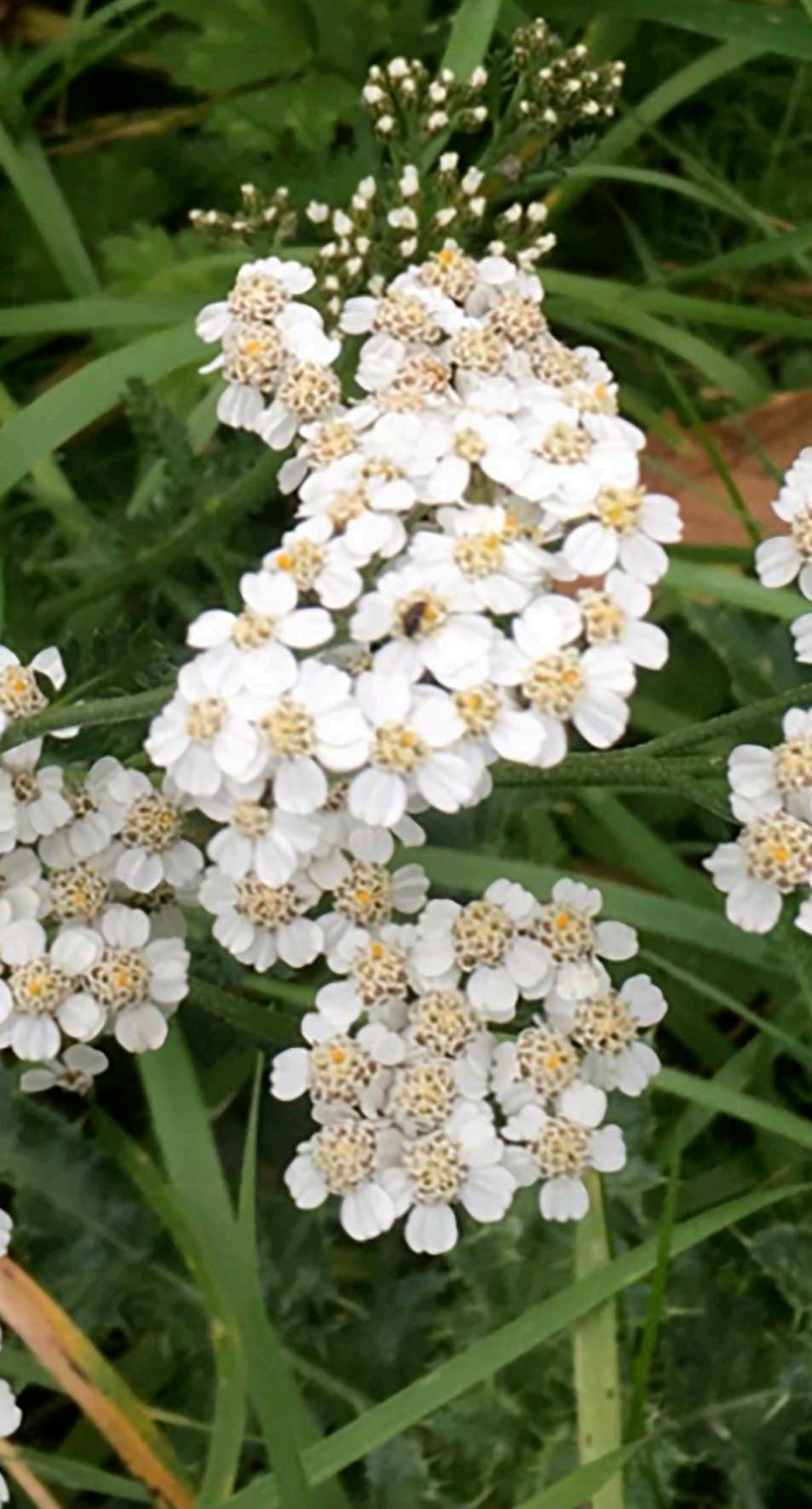
4 minute read
Plants from a Pastel Palette
by Hetty Byrne
In the case of these subtle treasures, small is definitely beautiful. And whilst they may not be big and bold individually, they can be truly eye catching if you stumble across a patch of them in bloom.
Take speedwell for example. This Flowering around the same time – April cheerful blue flower was traditionally to June - is greater stitchwort. This pretty associated with speeding travellers perennial sports white, daisy-like petals on their way and pops up in a variety of above leaves resembling grass stalks. The locations, including roadsides individual flowers only have and other grassy places. A low-growing, creeping plant, “ Nature’s less showy specimens five petals but each one is cut almost in half down the you’ll need a beady eye to middle, giving it the starry spot the darker blue lines bring a gentle appearance reflected in its etched from the middle to rainbow of colours Latin name, Stellaria holostea. the outer edge of its petals and the white dot, or “cat’seye”, in the centre. to the Bowland landscape. You may In some places it goes by the name of “poppers” - a clue to the sound of its In the main we find have to hunker seed pods as they ripen germander speedwell in Bowland but the group is a down to get a good and fire out the seeds within. Greater stitchwort large one with several sub look at them but, is also a valuable source species – some of which are very rare - so you if you do, you’ll of springtime nectar for pollinators and the food may also spot heath and discover a world of source of the twin-spot thyme-leaved speedwell, shade, shape and carpet moth. or perhaps brooklime in damper habitats. Look out for germander speedwell pattern. ” from late spring to early summer, although you could well come across this lovely family later in the year too.
Advertisement


Looking like it could have stepped straight out of a Flower Fairies illustration, water avens hides its delicate beauty under a shy, nodding head. A closer look reveals softly apricotcoloured petals surrounded by darker red sepals and a centre of yellow stamens. A member of the rose family, water avens prefers damp, semi-shady spots in woodlands, alongside streams and in wet meadows. The flowers, which peak around June, are visited by bees and other insects. After the flowers come attractive, burr-like seed heads. The hooks from these get caught on the fur of passing animals and this helps to spread the plant. Cuckoo flower is another lovely, early summer gem. Look out for its pale lilac flowers between April and June in damp ground in meadows, ditches and road verges. If you look closely you may see a tracery of darker purple on each of the four petals, plus a yellowy-green dot in the middle. The flower is said to appear with the first cuckoo – hence its name – but it’s also known as lady’s smock and May flower. If you spot blobs of froth on the stems these will be the larvae of the meadow froghopper. It’s also an important food plant for the caterpillars of orange tip and green veined white butterflies.


From a distance you might mistake ragged robin for its relative, red campion, as their soft, pink colour is very similar. Take a closer look though and you’ll see quite how different they are! This lover of marshy places, damp meadows and ditches has flowers with five petals, each of which has several, deep cuts giving the plant its “ragged” appearance. Pollinators, of course, don’t mind its untidiness and bumblebees, honeybees and butterflies all feed on the nectar. Sadly, this member of the pink family has declined with the loss of damp habitats but, if you’re lucky enough to find a place where it’s flourishing, you’ll be rewarded with a beautiful show. Later in the year – even into November – keep an eye open for pinky-white patches of yarrow. These tiny individual flowers form flat topped heads which resemble umbelifers. Yarrow (Achillea millefolium) is named after Achilles as it was believed the Greek hero used it on the battlefield to treat wounds. Millefollium means “thousand leaf” and refers to the plant’s many feathery green leaves which, if crushed, give off an aromatic scent. This delicate appearance belies its tough nature and it can thrive even on poor, drier soils. It’s a welcome splash of colour in the late autumn when many other flowers have finished.











